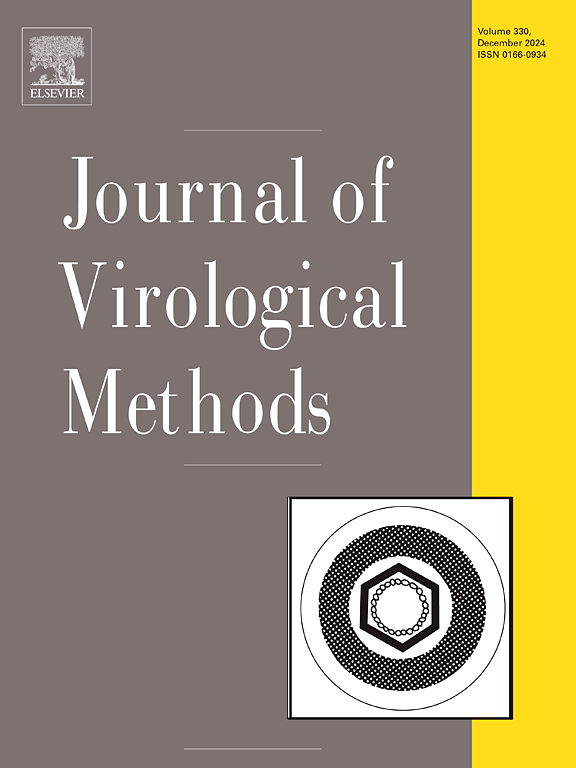The potential application of digital PCR in detecting different SARS-CoV-2 viral loads
IF 1.6
4区 医学
Q3 BIOCHEMICAL RESEARCH METHODS
引用次数: 0
Abstract
Rapid, effective, and accurate detection of severe acute respiratory syndrome coronavirus 2 (SARS-CoV-2) is crucial. It is essential to control the spread of the virus and ensure accurate treatment for the disease. In the study, a total of 170 clinical specimens from 164 patients were collected and analyzed through digital PCR (dPCR) and real time quantitative reverse transcription PCR (RT-qPCR). The results showed an 86.41 % agreement between dPCR and RT-qPCR, with differences primarily noted in suspected cases. RT-qPCR exhibited a sensitivity of 84.78 %, specificity of 95.83 %, and accuracy of 86.42 %, which were comparatively lower than the 100 % accuracy of dPCR. Subsequently, we explored the potential correlation between these two methodologies based on Ct value groups. A strong negative correlation was observed between RT-qPCR and dPCR techniques in the Ct value group between 25 and 35, while the correlation was weakest in the Ct > 35 group. Moreover, the concordance rate for detecting the ORF1 (142/162) gene by RT-qPCR was lower compared to that of the N gene (149/162). Additionally, nucleic acid concentrations for ORF1 gene detection were lower than those for N gene detection in dPCR. In conclusion, this study shows that dPCR provides more reliable detection than RT-qPCR, especially for samples with low viral loads. Furthermore, dPCR effectively tracked changes in viral load during hospitalization, facilitating the diagnosis and treatment of COVID-19.
数字PCR在检测不同SARS-CoV-2病毒载量中的潜在应用
快速、有效和准确检测严重急性呼吸综合征冠状病毒2 (SARS-CoV-2)至关重要。必须控制病毒的传播并确保对该疾病进行准确治疗。本研究共收集164例患者170份临床标本,采用数字PCR (dPCR)和实时定量反转录PCR (RT-qPCR)进行分析。结果显示,dPCR与RT-qPCR的一致性为86.41 %,差异主要体现在疑似病例中。RT-qPCR的灵敏度为84.78 %,特异度为95.83 %,准确度为86.42 %,均低于dPCR的100% %。随后,我们基于Ct值组探讨了这两种方法之间的潜在相关性。RT-qPCR与dPCR技术在Ct值25 ~ 35之间呈较强的负相关,而Ct >; 35组相关性最弱。RT-qPCR检测ORF1(142/162)基因的符合率低于N基因(149/162)。此外,ORF1基因检测的核酸浓度低于dPCR中N基因检测的核酸浓度。综上所述,本研究表明,dPCR比RT-qPCR提供了更可靠的检测,特别是对于低病毒载量的样品。此外,dPCR可有效追踪住院期间病毒载量的变化,为COVID-19的诊断和治疗提供便利。
本文章由计算机程序翻译,如有差异,请以英文原文为准。
求助全文
约1分钟内获得全文
求助全文
来源期刊
CiteScore
5.80
自引率
0.00%
发文量
209
审稿时长
41 days
期刊介绍:
The Journal of Virological Methods focuses on original, high quality research papers that describe novel and comprehensively tested methods which enhance human, animal, plant, bacterial or environmental virology and prions research and discovery.
The methods may include, but not limited to, the study of:
Viral components and morphology-
Virus isolation, propagation and development of viral vectors-
Viral pathogenesis, oncogenesis, vaccines and antivirals-
Virus replication, host-pathogen interactions and responses-
Virus transmission, prevention, control and treatment-
Viral metagenomics and virome-
Virus ecology, adaption and evolution-
Applied virology such as nanotechnology-
Viral diagnosis with novelty and comprehensive evaluation.
We seek articles, systematic reviews, meta-analyses and laboratory protocols that include comprehensive technical details with statistical confirmations that provide validations against current best practice, international standards or quality assurance programs and which advance knowledge in virology leading to improved medical, veterinary or agricultural practices and management.

 求助内容:
求助内容: 应助结果提醒方式:
应助结果提醒方式:


